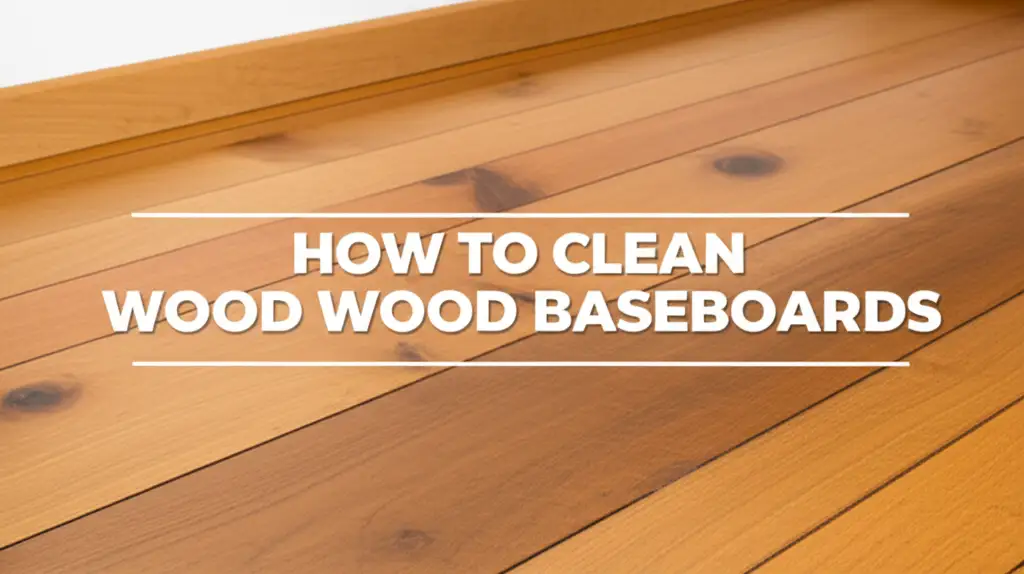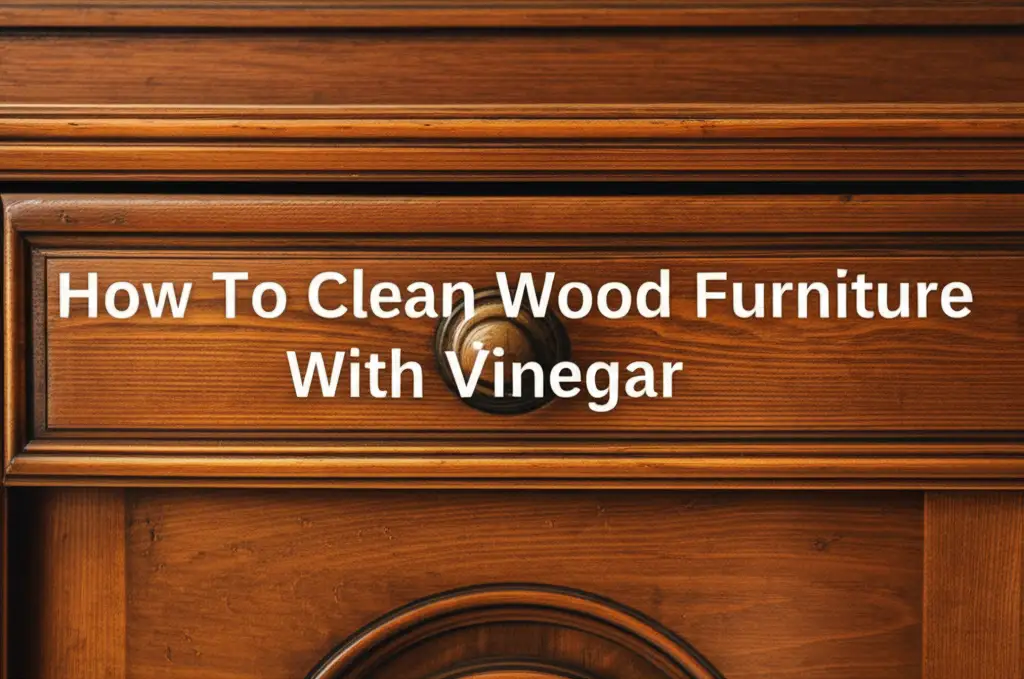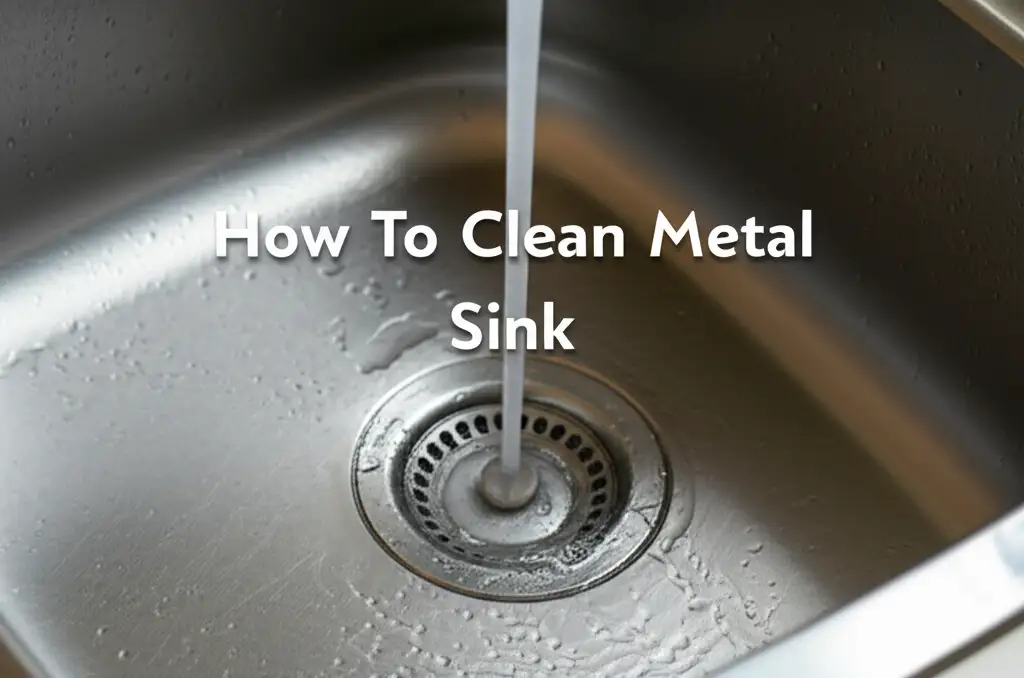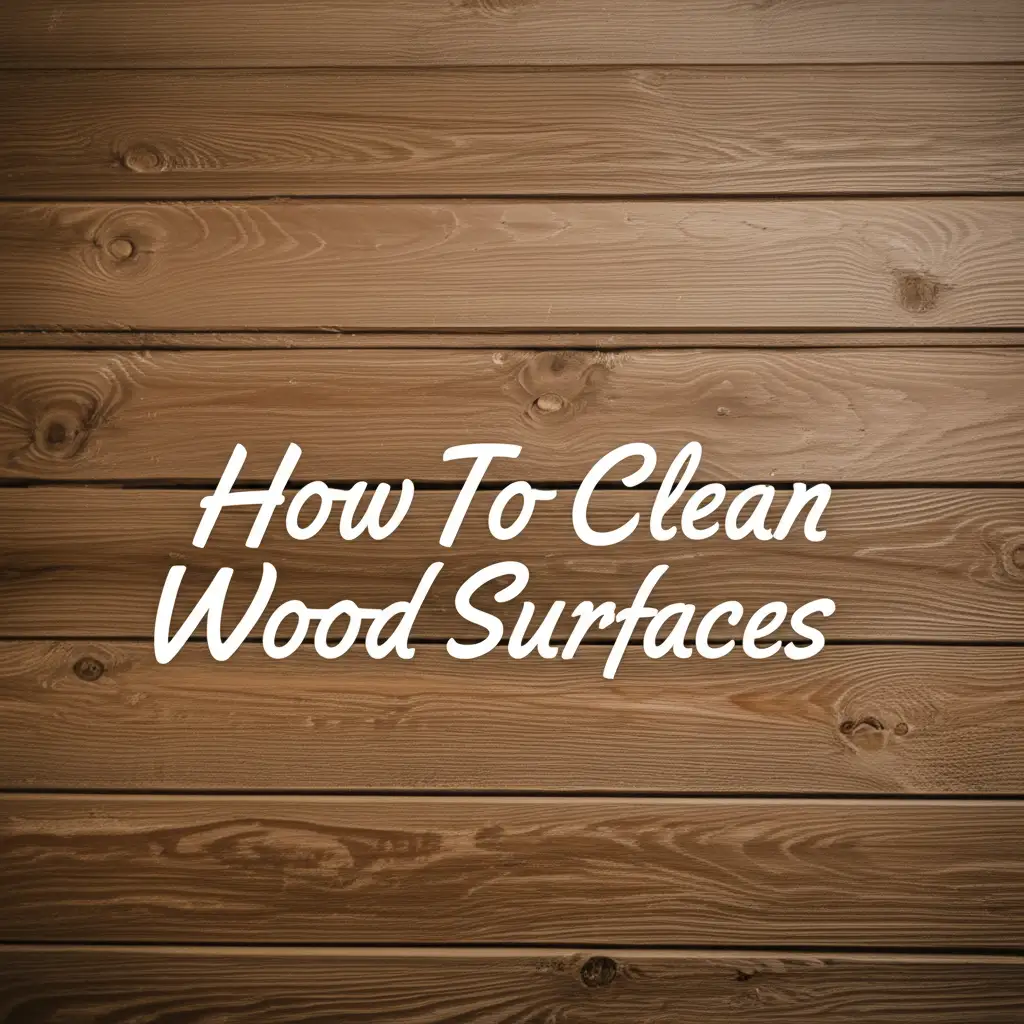· Home Cleaning · 20 min read
How To Clean Wood Baseboards

Clean Wood Baseboards: Simple Steps for a Spotless Home
Have you ever looked closely at your wood baseboards? They are often forgotten, collecting dust, dirt, and grime over time. These wooden strips protect your walls and add a touch of elegance to any room. However, dirty baseboards can make even the cleanest home look messy. Learning how to clean wood baseboards is a simple step that makes a big difference in your home’s appearance.
I know how easy it is to overlook these hidden areas. Dust bunnies love to gather there. Scuff marks appear from shoes, and spills happen. Keeping your wood baseboards clean not only improves your home’s look but also helps preserve the wood. Regular cleaning prevents dirt from becoming embedded and causing damage. This article will show you easy ways to clean your wood baseboards. We will cover the right tools, gentle cleaning solutions, and simple techniques to get them sparkling. Get ready to bring out the natural beauty of your wood trim.
Takeaway:
- Regularly dust wood baseboards to prevent dirt buildup.
- Use gentle, wood-safe cleaning solutions for wiping.
- Address tough stains or grime carefully with appropriate methods.
- Protect your baseboards with polishing or waxing for lasting shine.
- Clean baseboards improve your home’s appearance and protect the wood.
How do you clean wood baseboards?
You clean wood baseboards by first dusting them thoroughly to remove loose dirt. Then, wipe them with a damp cloth and a mild wood cleaner, or a mixture of warm water and a little dish soap. Always dry the wood immediately to prevent moisture damage and maintain their finish.
Why Keeping Your Wood Baseboards Clean Matters
Wood baseboards are more than just decorative elements. They serve a real purpose in your home. These trim pieces protect the bottom of your walls from impacts, scuffs, and spills. They also create a finished look where the wall meets the floor. Over time, wood baseboards collect a surprising amount of dust, dirt, and debris. This buildup happens every day.
Cleaning your wood baseboards is important for several reasons. First, it greatly improves the appearance of your home. Clean baseboards make rooms look tidier and well-maintained. Second, regular cleaning protects the wood itself. Dust and dirt can scratch or dull the finish over time. Built-up grime can also trap moisture against the wood, which may lead to warping or mildew. Third, clean baseboards contribute to better indoor air quality. They prevent dust and allergens from circulating in the air you breathe. I find that a quick clean makes my whole house feel fresher. It is a small task with a big impact.
Enhancing Home Aesthetics
Clean wood baseboards really make a room shine. They provide a crisp line between your floor and walls. When baseboards are free from dust and grime, they highlight the beauty of your flooring and paint. This attention to detail shows pride in your home. It creates a welcoming atmosphere for guests and family. I always notice how much brighter my rooms look after cleaning the baseboards.
Protecting Wood and Finishes
Dust and grit are abrasive. They can slowly wear down the protective finish on your wood baseboards. Regular wiping removes these harmful particles. It preserves the natural look and longevity of your wood trim. This small effort prevents costly repairs or refinishing later on. Keeping the wood dry also prevents swelling or cracking. You are extending the life of your home’s valuable wood elements.
Getting Ready: Essential Tools for Cleaning Wood Baseboards
Before you start cleaning, gather all your supplies. Having everything ready saves time and makes the process smoother. You do not need many special tools to clean wood baseboards effectively. Most items are likely already in your home. I always make sure to have my tools prepared beforehand. This way, I can move quickly from room to room.
Choosing the right tools protects your wood baseboards. It also makes the job much easier for you. Avoid abrasive scrubbers or harsh chemicals. These can damage the wood finish. Gentle tools and mild cleaning solutions are key to maintaining the beauty of your baseboards. Proper preparation ensures you get the best results without any accidental damage.
Must-Have Cleaning Supplies
- Vacuum Cleaner with Brush Attachment: This is your first line of defense. A soft brush attachment easily removes loose dust and debris. It gets into crevices without scratching the wood.
- Soft Microfiber Cloths: You will need several of these. Microfiber cloths are gentle on wood surfaces. They are highly absorbent and effective at picking up dirt.
- Small Soft Brush or Old Paintbrush: Use this for tight corners and detailed trim work. It helps dislodge dust that a vacuum might miss.
- Bucket or Bowl: For mixing your cleaning solution.
- Mild Wood Cleaner or Dish Soap: Choose a cleaner specifically designed for wood, or a very mild dish soap. I often use a tiny drop of dish soap in warm water.
- Warm Water: For diluting cleaners and rinsing cloths.
- Dry Towels or Cloths: Essential for drying the baseboards immediately after cleaning. This prevents water damage.
- Optional: Cotton Swabs or Toothpicks: For very stubborn spots or tiny grooves.
- Optional: Old Toothbrush: For scrubbing tight corners with care.
Choosing the Right Cleaning Solution
When cleaning wood, the solution you use is very important. Harsh chemicals can strip the wood’s finish. They can also dry out the wood, leading to cracks. Always opt for gentle options.
- Mild Dish Soap and Water: Mix a few drops of mild dish soap with warm water. This solution is gentle yet effective for general dirt. It lifts grime without harming the wood.
- Wood Cleaner: Many commercial cleaners are safe for finished wood. Read labels carefully to ensure they are suitable for your specific wood type.
- Vinegar Solution (use with caution): A mix of equal parts white vinegar and water can be used for tough spots. However, vinegar is acidic. Always test it on an hidden area first. Never let it sit on the wood for long periods. I prefer to stick to dish soap for general cleaning, but vinegar can be a powerful tool when used correctly on certain issues. For more details on using vinegar for wood cleaning, you can refer to our guide on how to clean wood furniture with vinegar.
Step-by-Step Guide to Cleaning Wood Baseboards
Cleaning wood baseboards is a straightforward process. Following these steps ensures you get a deep clean without damaging the wood. I always start with the driest methods first. This helps remove loose particles before introducing moisture. It is a good idea to work in sections. This keeps your cleaning efforts focused and manageable.
This method is gentle and effective for most types of finished wood baseboards. Always be mindful of the amount of moisture you use. Wood and excessive water do not mix well. Drying quickly is the most important step after wiping. You want your baseboards to look their best.
Step 1: Dusting and Loosening Debris
Begin by removing all loose dust and debris. This step is vital to prevent turning dust into muddy streaks when you wipe later. A good vacuum cleaner is your best friend here.
- Vacuum First: Use a vacuum cleaner with a soft brush attachment. Go along the entire length of your baseboards. Make sure to get into the crevices and corners. This picks up pet hair, cobwebs, and large dust particles.
- Hand Dusting: For areas the vacuum misses, use a soft, dry microfiber cloth. Wipe along the top edge and face of the baseboard. For tight spots, an old paintbrush or a small, soft-bristled brush works well. This gets dust out of carved details. You might also find a long handle duster helpful for reaching areas without bending too much. For more tips on general baseboard cleaning, including methods for reaching high or low spots, see our article on how to clean baseboards without bending over.
Step 2: Gentle Cleaning with a Damp Cloth
Once dusted, it’s time to tackle the grime. Remember, less water is more when cleaning wood. You want a damp cloth, not a soaking wet one.
- Prepare Solution: Fill your bucket or bowl with warm water. Add a few drops of mild dish soap or your chosen wood cleaner. Mix it gently.
- Dampen Cloth: Dip a clean microfiber cloth into the solution. Wring it out very, very well. The cloth should feel barely damp. It should not drip any water.
- Wipe Sections: Starting in one area, gently wipe down the baseboard. Use smooth strokes. For stubborn spots, apply a little more pressure. Do not scrub too hard.
- Rinse and Rewring: As your cloth gets dirty, rinse it in the clean water. Rewring it thoroughly before continuing is crucial. This prevents spreading dirt.
- Consider your walls too: If your walls are also dirty, you may want to clean those simultaneously. Our guide on how to clean baseboards and walls offers combined cleaning tips.
Step 3: Immediate Drying
This is perhaps the most critical step to protect your wood. Moisture is the enemy of wood.
- Use a Dry Cloth: Immediately after wiping a section with the damp cloth, follow up with a separate clean, dry microfiber cloth. Wipe the area thoroughly.
- Ensure No Moisture Remains: Make sure no moisture is left on the wood surface. Any lingering water can cause swelling, warping, or damage to the finish. This quick drying step preserves the wood’s integrity and shine.
Tackling Stubborn Stains and Grime on Wood Baseboards
Sometimes, basic cleaning is not enough. Wood baseboards can accumulate tough stains, scuff marks, or even sticky residue. These require a bit more attention. It is important to approach these issues carefully to avoid damaging the wood finish. Always test any new cleaning method in an inconspicuous area first. This prevents irreversible harm.
Patience is key when dealing with stubborn marks. Do not try to scrub aggressively. Gentle, repeated attempts with the right product work best. I have had success with these methods. They address specific types of grime effectively without harshness. Remember, your goal is to clean the baseboard, not strip its finish. For more general advice on dealing with stains, our article on how to clean stains on wood provides a wider perspective.
Addressing Scuff Marks and Dirt Buildup
Scuff marks from shoes or furniture are common on baseboards. Dirt can also become deeply ingrained, especially in high-traffic areas.
- Magic Eraser (use with extreme caution): A melamine foam sponge, often called a Magic Eraser, can remove scuff marks. Dampen it slightly and gently rub the mark. Be extremely careful. These sponges are abrasive and can remove the finish if used too aggressively or for too long. Test in a hidden spot first. Wipe immediately with a damp cloth, then dry.
- Baking Soda Paste: For tough dirt that sticks, mix baking soda with a tiny bit of water to form a paste. Apply the paste to the spot. Let it sit for a minute or two. Gently rub with a soft cloth or an old toothbrush. Rinse with a damp cloth and dry thoroughly. This paste is mildly abrasive, so use it carefully.
- Mineral Spirits: For very stubborn grime or sticky residue, mineral spirits can work. Apply a small amount to a clean cloth. Dab the affected area. Do not rub vigorously. Immediately wipe clean with a damp, soapy cloth, then with plain water, and dry completely. This is a stronger solvent, so use it sparingly and ensure good ventilation.
Removing Paint Splatters and Crayon Marks
Accidental paint splatters or crayon marks can happen, especially if you have children or did recent painting.
- For Fresh Paint: If the paint is still wet, wipe it immediately with a damp cloth.
- For Dried Latex Paint: Gently scrape off dried latex paint with your fingernail or a plastic scraper. Avoid metal tools. If some remains, try dabbing it with rubbing alcohol or a specialized latex paint remover designed for wood. Always test first.
- For Dried Oil-Based Paint: Oil-based paint is harder to remove. You might need mineral spirits or paint thinner. Apply very little to a cotton swab. Dab the paint spot carefully. Do not let it spread to the wood finish. Wipe away with a clean, dry cloth immediately.
- Crayon Marks: For crayon, a dab of mayonnaise or peanut butter can help break down the wax. Apply, let sit for a few minutes, then wipe with a clean cloth. Another option is to gently rub with a damp microfiber cloth and a drop of dish soap. If you have serious crayon issues, check our detailed guide on how to clean crayon off wood.
Dealing with Mold and Mildew
Mold and mildew on wood baseboards can indicate moisture problems. Address the moisture source first. Then, clean the mold.
- Vinegar Solution: Mix equal parts white vinegar and water. Spray or wipe onto the moldy area. Let it sit for 10-15 minutes. Gently scrub with a soft brush or cloth. Wipe clean with a damp cloth and dry completely. Vinegar kills many types of mold.
- Hydrogen Peroxide: A 3% hydrogen peroxide solution can also be effective. Apply it directly to the mold with a cloth. Let it sit for a few minutes, then wipe clean and dry. Hydrogen peroxide is less harsh than bleach but still effective.
- Bleach (Use as a last resort on finished wood): Bleach can lighten or damage wood finish. It is generally not recommended for finished wood baseboards unless absolutely necessary for severe mold. If you use it, dilute it heavily (1 part bleach to 10 parts water). Apply with a cotton swab just to the mold spot. Rinse quickly and thoroughly. Always test first. For more comprehensive information on tackling mold, refer to our articles on how to clean black mold off wood or how to clean mold off of wood furniture.
Protecting Your Wood Baseboards: Maintenance and Finishing
Cleaning is just one part of maintaining beautiful wood baseboards. After cleaning, taking steps to protect the wood can extend its life and keep it looking its best. This also reduces how often you need to do deep cleaning. Regular maintenance is far easier than intense stain removal. I find that a little protection goes a long way in preserving my home’s wood features.
Protecting your baseboards involves two main aspects: maintaining the wood’s finish and preventing future dirt buildup. Different finishes might require different care products. Knowing what type of finish your baseboards have helps you choose the right protection. Most baseboards have a clear coat, paint, or stain.
Polishing and Conditioning Wood Baseboards
Once your baseboards are clean and dry, consider polishing or conditioning them. This step adds shine and a protective layer.
- Wood Polish: For baseboards with a clear coat or stained finish, a good quality wood polish can restore luster. Apply a small amount to a clean, soft cloth. Rub it into the wood following the grain. Buff with a separate clean cloth until it shines. Polishes often contain oils that nourish the wood and repel dust. Avoid polishes that contain silicone, as they can build up over time and create a cloudy film.
- Wood Wax: Wax provides a durable protective barrier. It is excellent for high-traffic areas or very old wood. Apply a thin, even coat of paste wax with a soft cloth. Let it dry to a haze, then buff vigorously with a clean, soft cloth. Wax offers long-lasting protection against moisture and scratches.
- Oil-Based Conditioners: Some wood conditioners are oil-based. These are great for unfinished or very dry wood to prevent cracking. Apply sparingly. Wipe off any excess after 15-30 minutes.
Preventing Future Dirt Buildup
Prevention is always easier than cleaning. Simple habits can keep your wood baseboards cleaner for longer.
- Regular Dusting: The single most effective prevention method is frequent dusting. A quick swipe with a dry microfiber cloth or a vacuum attachment every week or two prevents major dust accumulation. This takes minutes but saves hours of deep cleaning.
- Door Sweeps and Mats: Use floor mats at entryways to trap dirt before it tracks inside. Door sweeps help reduce dust and drafts coming in under doors.
- Air Filters: Regularly change your HVAC air filters. Cleaner air means less dust settling on your baseboards and other surfaces.
- Wipe Spills Immediately: If anything spills near the baseboards, wipe it up at once. This prevents stains from setting into the wood.
- Furniture Placement: Be mindful of how furniture is placed. Leave a small gap between furniture and baseboards if possible. This reduces scuff marks and allows for easier cleaning access.
Common Mistakes to Avoid When Cleaning Wood Baseboards
Cleaning wood baseboards seems simple, but some common errors can cause damage. Avoiding these mistakes ensures your wood trim stays beautiful and intact for years. I have learned these lessons over time. Knowing what not to do is just as important as knowing what to do. Protecting your wood is key.
Using Too Much Water
This is the biggest mistake you can make when cleaning wood. Wood absorbs water.
- Why it’s bad: Excessive water causes wood to swell, warp, or crack. It can also damage the finish, leading to cloudiness or peeling.
- Solution: Always wring out your cleaning cloth until it is barely damp. Wipe quickly and dry immediately with a separate, clean, dry cloth. Never let water sit on the wood surface.
Using Harsh Cleaners or Abrasive Tools
Some cleaning products are too aggressive for wood finishes.
- Why it’s bad: Bleach, ammonia-based cleaners, abrasive powders, or scrub pads can strip the finish from your wood baseboards. This leaves the wood unprotected and dull. It can also cause discoloration.
- Solution: Stick to mild dish soap and water, or a cleaner specifically labeled for finished wood. Use soft microfiber cloths, old paintbrushes, or cotton swabs. Avoid steel wool or stiff-bristled brushes.
Neglecting Regular Dusting
Skipping the initial dry dusting step can make cleaning harder and less effective.
- Why it’s bad: If you wipe dusty baseboards with a damp cloth, you will create muddy streaks. This simply spreads the dirt around rather than removing it.
- Solution: Always start with a thorough dry dusting. Use a vacuum with a brush attachment or a dry microfiber cloth to remove all loose particles before introducing any moisture. This saves time and effort in the long run.
Forgetting to Test Cleaners
Different wood finishes react differently to cleaners. What works on one might harm another.
- Why it’s bad: Using a new cleaner without testing it first can lead to irreversible damage, discoloration, or dulling of the finish.
- Solution: Before applying any new cleaner or solution (especially homemade ones like vinegar mixes), test it on an inconspicuous area. A spot behind furniture or inside a closet door is ideal. Wait a few minutes, wipe it off, and check for any adverse reactions.
Ignoring the Finish Type
Not all wood finishes are the same. Understanding yours helps you choose the right cleaning method.
- Why it’s bad: Using an oil-based polish on painted baseboards or an abrasive cleaner on a delicate wax finish can ruin the appearance.
- Solution: Identify your baseboard’s finish. Most modern baseboards have a durable polyurethane or lacquer finish. Older ones might be waxed, shellacked, or just stained. If unsure, err on the side of caution with the gentlest methods.
Advanced Tips for Sparkling Wood Baseboards
Beyond the basics, there are a few extra tips that can elevate your baseboard cleaning game. These methods offer deeper cleaning or specialized solutions for unique situations. They can help you achieve truly sparkling results. I often use these advanced techniques for a professional finish. These extra steps ensure longevity and beauty for your wood trim.
Deep Cleaning Detailed Trim
Wood baseboards often have intricate carvings or profiles where dust loves to hide.
- Compressed Air or Blow Dryer: For very detailed or carved baseboards, a burst of compressed air (like for keyboards) or a blow dryer on a cool setting can dislodge dust from tiny grooves. Follow up with a vacuum.
- Soft Paintbrush or Detail Brush: A clean, dry paintbrush with soft bristles is perfect for gently sweeping dust out of decorative elements. Use small, precise strokes.
- Cotton Swabs or Toothpicks: For truly stubborn grime or gunk stuck in small crevices, a cotton swab dipped in your mild cleaning solution (and then squeezed almost dry) can reach those tiny spots. A toothpick can carefully dislodge dried debris, but be gentle to avoid scratching.
Buffing for Extra Shine
After cleaning, buffing can add a beautiful luster to your wood baseboards.
- Dry Buffing: After cleaning and drying, use a clean, dry microfiber cloth. Vigorously rub the baseboard surface in small circular motions. This helps polish the existing finish and brings out its natural sheen.
- Applying a Protective Polish: As mentioned before, a good quality wood polish or wax can not only add shine but also provide a protective layer against future dust and grime. Choose products specifically for finished wood. Apply sparingly and buff according to product directions.
Addressing Pet Hair and Allergen Buildup
Pet hair and dander tend to accumulate quickly along baseboards. This can worsen allergies.
- Rubber Gloves: Put on a pair of rubber cleaning gloves. Run your gloved hand along the baseboards. The static electricity generated will attract and pick up pet hair.
- Lint Roller: A sticky lint roller is very effective for picking up pet hair and fine dust from baseboards. Simply roll it along the surface.
- Electrostatic Duster: These dusters attract dust and hair using static charge. They are great for quick daily or weekly maintenance.
Long-Term Protection and Maintenance
Consider long-term solutions for protecting your baseboards, especially if they are in high-traffic areas or prone to moisture.
- Reapplying Finish: Over many years, the protective finish on your baseboards may wear down. If they start to look dull or absorb moisture easily, consider reapplying a clear polyurethane or lacquer finish. This is a bigger project but offers long-term protection. Ensure the wood is perfectly clean and dry before applying.
- Consider Humidity Control: In humid environments, wood can swell or mold. Using a dehumidifier can help control moisture levels. This protects both your baseboards and other wood elements in your home.
Frequently Asked Questions About Cleaning Wood Baseboards
How often should I clean wood baseboards?
You should dust wood baseboards weekly or bi-weekly to prevent buildup. A deeper clean with a damp cloth is good every one to two months. High-traffic areas or homes with pets might need more frequent attention. Regular light cleaning prevents dirt from becoming deeply embedded.
What is the best cleaner for wood baseboards?
A mild solution of a few drops of dish soap in warm water is often the best and safest cleaner for most finished wood baseboards. You can also use a commercial wood cleaner designed for finished wood surfaces. Always ensure the cleaner is gentle and does not contain harsh chemicals or abrasives.
Can I use vinegar on wood baseboards?
Yes, you can use a diluted vinegar solution (equal parts white vinegar and water) on wood baseboards for tough grime. However, use it sparingly. Vinegar is acidic and can dull some finishes over time if used too often or left on too long. Always test in an hidden area and dry immediately after use.
How do I remove dust from wood baseboards effectively?
To effectively remove dust, start with a vacuum cleaner using a soft brush attachment. This lifts loose dirt and pet hair. Follow up with a dry microfiber cloth or a small soft brush to get into crevices and fine details. This dry removal prevents dust from turning into mud when you later wipe.
Is it safe to use water on wood baseboards?
It is safe to use water on finished wood baseboards as long as you use it sparingly. The key is to use a damp cloth, not a wet one. Immediately dry the baseboards with a clean, dry cloth after wiping. Excessive moisture can cause wood to swell, warp, or damage its finish.
How can I clean baseboards without bending over?
You can clean baseboards without bending over by using tools with long handles. A vacuum cleaner with an extended wand and brush attachment works well. You can also use a flat-head mop covered with a microfiber cloth, dampened with your cleaning solution. Extendable dusters are great for regular dry dusting.
Conclusion: Enjoying the Beauty of Clean Wood Baseboards
Cleaning wood baseboards might seem like a small task, but it makes a huge difference. You protect your valuable wood trim and improve your home’s overall appearance. We covered everything from gathering your tools to tackling tough stains. The most important lessons are to start with dry dusting, use minimal moisture, and dry the wood immediately. These simple steps keep your baseboards looking their best.
- wood cleaning
- baseboard maintenance
- home cleaning tips




